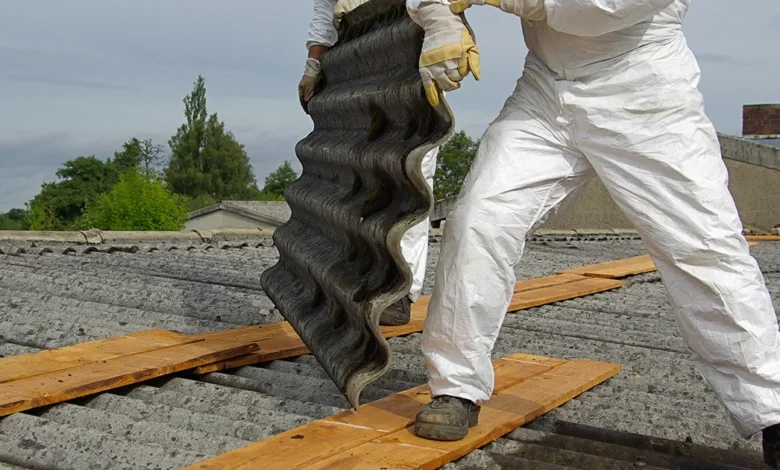What Is Asbestlint?

Asbestlint typically refers to a type of asbestos-containing tape or fibrous material used historically for insulation, sealing joints, or fireproofing. It may also denote airborne lint or dust that contains asbestos fibers, especially when deteriorated or disturbed.
Asbestos was widely used in construction due to its heat resistance, durability, and insulating properties. The tape form (asbestlint) was often applied around pipes, ducts, joints, and other thermal systems to seal, insulate, or protect against flame.
Over decades, such tape degrades, frays, or is disturbed (e.g., during renovation), releasing microfibers into the air — which is when asbestlint becomes a hidden hazard.
Historical Usage & Typical Applications
From the mid-20th century onward, asbestos tape was a go-to in many industrial, commercial, and residential settings. Some common uses include:
-
Sealing joints and seams in ductwork or piping
-
Wrapping or insulating boilers, furnaces, and exhausts
-
Fireproofing or heat-protection in electrical installations
-
Sealing flanges, valves, or heat-generating equipment
Because it was valued for high temperature tolerance and resistance to wear, many buildings constructed before tighter asbestos regulations employed asbestlint beneath finishes or behind panels.
As regulatory awareness grew, use of asbestos declined, but legacy installations persist — often hidden or overlooked in older structures.
Health Risks & Hazards of Asbestlint Exposure
The danger of asbestlint lies not in the intact tape itself, but what happens when it is disturbed, damaged, or deteriorating — releasing asbestos fibers into the air. Those fibers, when inhaled, can lodge deep in the lungs and cause serious diseases over time.
Key health conditions associated include:
-
Mesothelioma: A cancer of the lung (pleura) or abdominal lining, often with a long latency period
-
Asbestosis: Scarring of lung tissue causing breathing difficulty
-
Lung cancer: Particularly in smokers or those with cumulative exposures
-
Pleural plaques / thickening and other lung complications
Because many symptoms appear decades after exposure, even small or occasional contact with asbestlint fibers is dangerous.
Secondary exposure is also a concern — fibers can cling to clothing, tools, or move through HVAC systems, contaminating areas beyond the original site.
How to Identify Asbestlint in Buildings
Spotting asbestlint requires care and awareness, because it often looks like ordinary tape, cloth, or fibrous dust. Some indicators:
-
The building is older (pre-1980s or 1990s)
-
Tape / wrapping materials around pipes, boilers, HVAC ducts
-
Fraying, powdery residue, brittle or cracked tapes
-
Areas showing grayish, fibrous dust in hidden corners
-
Renovation or repair reveals hidden layers beneath insulation or coverings
For proper identification:
-
Professional sampling & lab analysis (bulk sample, air sampling) is essential
-
Polarized Light Microscopy (PLM) or Transmission Electron Microscopy (TEM) help detect asbestos fibers in samples
-
Avoid DIY disturbance, which can release fibers further
Having professionals inspect before significant renovations is critical for safety.
Safe Handling, Removal & Regulations
Because of the serious risks, strict protocols and regulations govern how asbestlint should be handled or removed.
Regulations & Compliance
Many countries consider asbestos and asbestos-containing materials subject to regulatory control. You must comply with building codes, environmental laws, and health & safety standards for asbestos abatement.
Safe Handling Practices
-
Always use Personal Protective Equipment (PPE): high-efficiency respirator (HEPA filter), disposable coveralls, gloves
-
Containment: seal off work areas, use negative air pressure, plastic sheeting
-
Wet methods: mist surfaces to reduce fiber release before any cutting or removal
-
Use HEPA vacuums for cleanup, never dry sweeping
-
Proper labeling and handling of waste as asbestos hazardous waste
Removal / Remediation
-
Removal should be performed by licensed asbestos contractors
-
Encapsulation or enclosure sometimes used when removal is not feasible
-
Disposal in approved, licensed asbestos waste facilities
-
Document the entire process for liability, compliance, and health records
Improper handling can worsen contamination and increase exposure risk to occupants or workers.
Alternatives & Prevention Strategies
Replacing asbestlint (or avoiding use of asbestos materials) is essential in modern construction and restoration.
Some safer alternatives include:
-
Fiberglass or ceramic fiber tape: Performs well in insulation without asbestos risk
-
Mineral wool / rock wool: Used in thermal insulation
-
Silicone or high-temperature tapes / adhesives: For sealing joints
-
Foil / aluminum tapes: For ductwork sealing without fibers
Preventive strategies:
-
During renovation, always test suspicious materials before disturbing
-
Educate workers, contractors about asbestos risk and safe practices
-
Maintain asbestos management plans in older buildings
-
Regular inspections of known suspect areas
Transitioning to these alternatives and following strict safety protocols greatly reduces risk.
Conclusion
Asbestlint, the asbestos-containing tape or fibrous material, may seem obscure but represents a serious hidden hazard in older buildings and industrial settings. When intact, it may be unnoticed — but when disturbed, it releases dangerous fibers that can cause deadly lung diseases decades later.
Recognizing potential sources, using professional detection methods, following strict removal regulations, and choosing safer alternative materials are essential strategies for protecting lives. If you suspect asbestlint in your home or workplace, always consult licensed asbestos professionals rather than attempting DIY removal.



